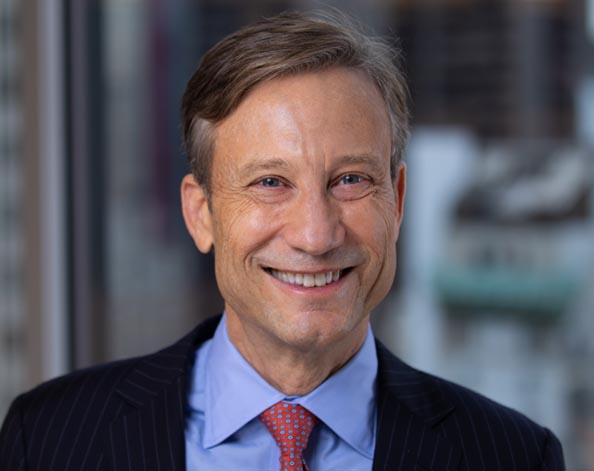Receive Focus insights straight to your inbox
The traditional ten-year fund structure, with an optional two-year extension and five-year investment period, has proved remarkably persistent since the earliest days of private equity. The focus on value creation, and liquidity, within defined time parameters are appealing for limited partners while instilling investment discipline in general partners (GPs).
But both LPs, and GPs, are reluctant to give up the growth potential that may remain within an investment, just because the terms and conditions dictate that they should.
This is not a new phenomenon. In the past, we have seen firms attempt to sell assets onto successor funds in order to retain the upside. But this process is fraught with conflicts of interest.
GP-led secondaries have made managers alert to the fact that they do have choices and that they don’t have to step away from an asset.
The advent of the GP-led secondaries market within the past few years, however, has opened managers’ eyes to the possibility of holding on to star portfolio companies and continuing to drive value in the later years of a fund. It is clear that private equity firms are now pushing back their investment horizons.
“The biggest change to the way that GPs think about structures has emerged over the past three or four years with the GP-led secondaries market,” explains Matt Hansford, UK Fund Finance. “Managers are now able to look at assets in their portfolios in years seven or eight onwards and ask themselves the question, ‘if we hold onto this, do we think we can add value’?
“If you look at the blue-chip GPs that are completing these transactions, it is clear that there is no stigma attached,” Hansford adds. “GP-led secondaries have made managers alert to the fact that they do have choices and that they don’t have to step away from an asset, having done all that hard work, just because their time is up. Ultimately it boils down to whether the “ten plus two” fund life is suitable for every situation. It is clear that it is not.”
Our latest GP Trends survey found that just under a third (31%) of respondents are contemplating launching a product with a longer duration. Managing partners, in particular, confirmed that this is something that is being seriously discussed at board level.
“We are absolutely seeing an evolution in the private equity market towards alternative structures to the two plus ten,” says Tom Glover, from Fund Finance US. “We are seeing longer-dated funds emerge from some of the large players and we are seeing some single company 20 years structures emerge as well.
“There are some real advantages to the traditional model but there are challenges as well,” Glover adds. “Having to sell some of your best companies within that defined time scale can be very frustrating for GPs, but also for LPs, who would love to see the real stars in the portfolio run for longer.”

Private equity has become a lot more hands-on, particularly since the financial crisis.
When your five years is up
It is not just the length of the fund as a whole that is evolving. Our conversations with GPs in the market suggest that a large number of funds plan to make investments after the initial investment period has expired, in order to support their portfolio.
The asset class has become more operationally orientated, and buy and build plays, in particular, are pervasive. Those value-creating opportunities don’t grind to a halt when the five-year investment period ends.
More than four out of five GPs in our survey (83%) said they expect to make follow-investments after the investment period has closed.
“Private equity has become a lot more hands-on, particularly since the financial crisis,” says Hansford. “A lot of strategies are now acquisitive, or involve other forms of intensive follow-on investment, so naturally GPs are holding on to assets for longer and want the option to continue to drive growth.”
Indeed, more than four out of five GPs in our survey (83%) said they expect to make follow-investments after the investment period has closed. Only one in ten, meanwhile, said they would rule out late investment, suggesting that the significance of the “investment period” – beyond its relevance for calculating management fees – is waning.
And the situation may be exacerbated if the economy enters a downturn and traditional sources of capital, at an asset level, dry up. There will continue to be growth opportunities, and low asset prices will make bolt-on acquisitions particularly attractive, but GPs will become even more capital constrained. Furthermore, GPs may find they have to protect some of their portfolio companies, providing the balance sheet with additional ballast in the short-term.
The pronounced trend towards late fund life investment, coupled with the prospect of even greater pressures on post-investment period cash flow in the event of economic decline, poses questions as to how such activity will be funded.
What are your options?
Undrawn commitments will have been largely utilised in many cases and, even where funds have capital reserved, it may prove insufficient. GPs do have the option to structure an expensive holdco PIK financing at a company level. They could also choose to raise co-investment from LPs – but this too will be costly. As not all LPs will be able to partake, it also creates asymmetry within the investor base.
Alternatively, however, fund managers are increasingly willing to use innovative financing models – hybrid structures, secured against a mix of undrawn commitments and underlying NAV, or concentrated NAV facilities secured against the underlying portfolio in full – to provide liquidity for follow on investment in years six, seven and eight, once the investment period has expired.
The collateral pool provided by borrowing against the value of the entire of the remaining portfolio means these facilities can be much more cost-effective than a holdco financing. Furthermore, while LP co-investment does not usually involve any fee opportunity for the GP, by creating value in the fund, the NAV-backed financing does.
“If you are executing a roll-up strategy across multiple portfolio companies and don’t have the dry powder remaining to support that, a concentrated NAV product allows you to borrow against the underlying value of the entire portfolio in order to access the liquidity required to continue that strategy, not just in the early years, but throughout the life of the fund,” Glover explains.
“GPs don’t want to stop growing the companies in their portfolio because of the cash flow profile of the fund,” adds Hansford. “Providing growth capital through NAV-backed financing can help enhance the value of the fund. Or, if a business is going through a difficult time, NAV-backed protective capital can ease a short-term period of pressure, or aid a turnaround. In either situation, we can provide a portfolio-focused facility secured on the underlying assets of the fund.”

The private equity world used to be a very simple one. Now there is an increasing number of tools available for GPs to continue to create value through the second phase of the traditional fund life.
The final stages
As funds enter their final stages, in years nine to 12, the fund finance solutions available evolve further. At this stage in the fund’s life, limited partners may start seeking liquidity. Our facilities can be used to support the efficient structuring of a GP-led secondaries transaction that enables the fund manager to continue to run with its remaining high-potential assets.
“Whether a fund has commitments left or not, we are able to provide different types of capital for different situations, from hybrid, though to NAV, through to the financing a GP-led secondaries deal,” Hansford explains.
“There is a real scarcity of capital for funds in this space. You can get secondary equity priced at 15% to 20%, or preferred equity priced at 12% to 15%. But for shorter-term bridging finance or simply lower risk positions, with well-diversified portfolios, there are very few sources of single digit return capital out there. The ability to provide a full spectrum of capital throughout a funds life is where we think we can make a real difference.”
“The private equity world used to be a very simple one,” adds Glover. “You go out and raise money, you invest for five years and then you harvest for five years, possibly with a year or two’s extension. Now there is an increasing number of tools available for GPs to continue to create value through the second phase of the traditional fund life. These are exciting days for fund managers.”




